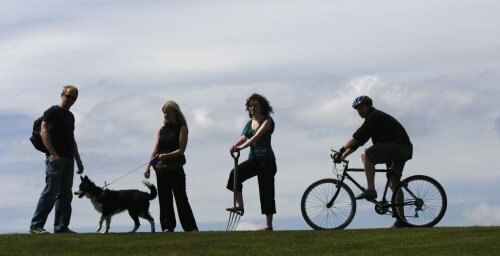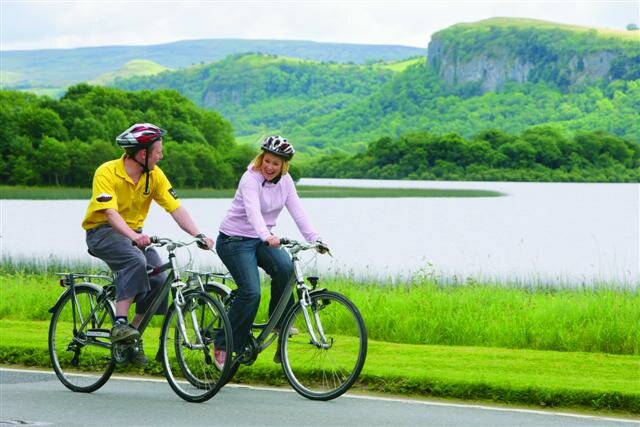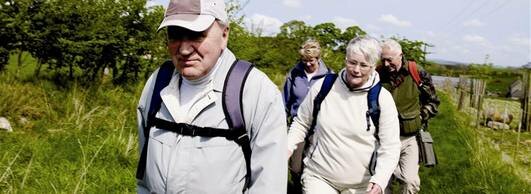

View the other sections of the Physical Activity pages by clicking on the relevant section of the navigation bar to the left hand side.
See the page's contents as a pdf version here

Physical activity and sport has a range of health benefits including:-
- Reduction in premature deaths by 20-30% and in all cause mortality, hence an increase in life expectancy.
- It can improve mental health and psychological well being.
- Coronary heart disease and lower risk of contracting cardiovascular and respiratory diseases than those with sedentary lifestyles.
- It can lower the risk of strokes and treat peripheral vascular disease.
- Managing hypertension.
- Obesity and in people who are overweight.
- Musculoskeletal health including delaying the progression of osteoporosis, being beneficial for people with osteoarthritis. It can increase bone density and make joints, muscles, ligaments and tendons stronger.
- Cancer – includes being associated with a reduction in the overall risk of cancer, has a clear protective effect on colon cancer, and is associated with a reduced risk of breast cancer after the menopause.

- Reduces the risk of type 2 Diabetes.
- Can benefit the immune system.
- It can improve balance in co-ordination, mobility, strength and endurance.
- In childhood it has a range of benefits, including healthy growth and development, maintenance of energy balance, psychological well being and social interaction.
The above facts were sourced from the Department of Health (2004) At Least 5 a week, evidence on the impact of physical activity and its relationship to health and the Department of Health (2009) Be Active Be Healthy: a plan for getting the nation moving.
On average, an inactive person spends 38% more days in hospital than an active person, and has 5.5% more family physician visits, 13% more specialist services and 12% more nurse visits than an active individual. Sari, Nazmi (2008) Physical inactivity and its impact on healthcare utilization.
Click here for a factsheet produced by the British Heart Foundation National Centre for Physical Activity and Health (BHFNC) on the health benefits of physical activity in November 2009.
Click here for a summary of the evidence base of health benefits of physical activity, produced by PAN-WM and Department of Health, 2009

- Reduced costs for the NHS and other services as a result of the health benefits of physical activity and sport. The estimated costs of physical inactivity in England are £8.2 billion annually (Department of Health, 2009), which does not include the contribution of inactivity to obesity which in itself has been estimated at £2.5 billion annually (Department of Health 2009). The figures include both the costs to the NHS and costs related to the economy, such as absence from work.
- The Costs of physical inactivity and savings as a result of physical activity for the NHS Primary Care Trusts (PCT) (2006/07):-
o Total savings for the sub region of Coventry, Solihull and Warwickshire -
£13, 749,420
o Coventry Teaching PCT - £3,621,860,
o Solihull NHS Care Trust - £2,954,390 and
o Warwickshire PCT - £7,173,170
These figures are likely to be an under estimation as the research took into account 5 of the 20 plus chronic conditions that physical inactivity contributes to in order to calculate the figures (Department of Health, 2007).
Click here for information on the economic benefits of physical activity, produced by the British Heart Foundation National Centre for Physical Activity and Health (BHFNC).

- Personal development and life skills, depending on the activity, such as discipline, people skills and self confidence.
- Community development in some settings, for example, bringing people together and breaking down barriers.
- As a diversionary tactic in some settings, for example, prevention and reduction of crime, drugs and alcohol use and mental health problems.
- For developing athletes and performers in order to improve skill levels and for people to succeed at all levels in their chosen activity.
- If an activity such as cycling and walking to work is undertaken, pollution and noise levels can be reduced and individuals can save on transport costs.
- It can be fun and people gain enjoyment from it, which in turn has a number of other benefits.
Have a look at the useful Get Active booklet produced by the British Heart Foundation for more information and resources on getting active by clicking here.
Click to view 'Be Active Be Healthy, a planning for getting the nation moving,' Department of Health (2009)
Click here to view 'Start Active, Stay Active, UK CMOs, July 2011